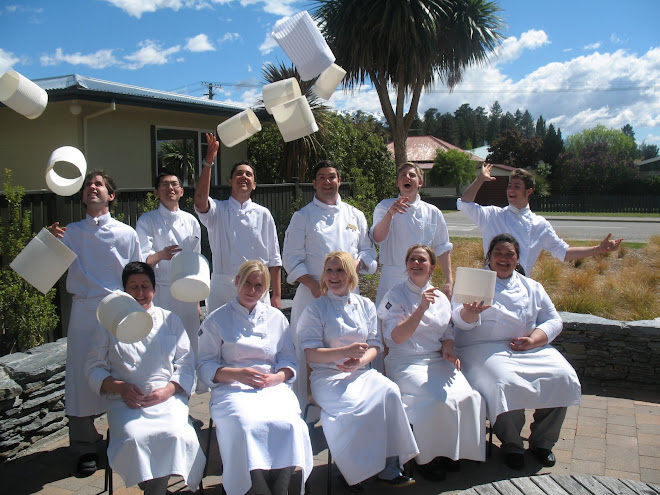
As attractive as open learning can be to both institutions & students , I believe that it could both extend the life of our Central Otago campus & possibly cause its demise.
We are currently experiencing tough times with low student numbers & are searching for new markets & new ways to attract both foreign & domestic students.
With low unemployment, high living costs, high fuel costs & the prospects of dealing with high student loans, many people are choosing not to enrol in full time programmes & instead looking at part time options. We currently have 2 part time courses & although the student numbers are OK some students would really benefit from being on full time courses which in turn are struggling to fill.
At present our Level 3 program has 5 students who thankfully are very motivated & committed & are on course for high achievement which will be an asset for the 2nd year level 4 program & the National Toque dor if they choose to return next year.
Last year we had student retention of 30% between the level 3 & 4 programs and we could not persuade many to fork out more for fees & more importantly commitment for another year of study.
If we don't get enough enrolments this year then our level 4 course will not run & the profile & exposure of our campus will diminish.
So introducing flexible learning to both level 3 & 4 programs could be a solution.
With a huge amount of development we could offer online videos, blogs, learning sites such as wikipedia & blackboard do deliver our programs enabling distance learning with students attending assessment blocks of approx 1 week to show competency. We currently use a very similar model to this with modern apprentice schemes & although achievable the weeks are very long & stressful for the student & unless they have received training in the workplace we have found the skill level to be quite poor overall.
So yes we could be a more attractive training provider by offering more flexibility especially to people in surrounding rural areas but could also tarnish our reputation for the chefs we produce.
Looking ahead to my presentation , I am thinking of covering the knives unit 13285, using a combination of Photo story, PowerPoint software with utube video links to cover manufacturing, usage & maintenance and posting a link on my blog to an online student survey .
I will need to hone my experience on the software I'm using and will need to develop a survey using perhaps templates online.
Below are some interesting comments from :
http://unesdoc.unesco.org/images/0012/001253/125396e.pdfOpen and distance learning.
The essence of it is that it enables students to learn without
attending an institution. That has made it attractive for students who, for practical, economic,
social and geographical reasons cannot get to college. It also makes it particularly
appropriate for audiences that are scattered, and audiences that cannot leave their jobs to
attend full-time courses. The world’s sixty million teachers are like that.
2.2 Is it legitimate?
Open and distance learning is often seen as barely legitimate. Its history is marked by the work
of institutions that accepted student fees, gave them poor service, and kept their costs down
by encouraging students to drop out once they had paid all their money. Learning at a distance,
particularly from printed materials, lends itself to rote learning. If teaching material gives
all the answers then there is no room for an individual response while if it fails to do so the student may feel challenged but frustrated. Distance learning can be a soulless and isolated activity so that dropping out is more attractive than going on. Most parents and probably most
educational planners would encourage their own children to study at a conventional university
rather than an open university. Few would argue that open and distance learning matches
the best of conventional education as sometimes practised in rich universities in industrialised
countries or in a golden age we think our grandparents might have been able to remember.
But there is a threefold case to be made for its legitimacy. First, the evidence of public-sector
open universities, and dual-mode universities that teach both conventionally and at a distance,
is that students can achieve examination results that match those of conventional universities.
A significant proportion of students give up along the way and do not complete their courses.
But this is true of all students working part-time and not a distinguishing mark of students
learning at a distance.
Second, distance education has been powerfully effective in reaching audiences who could not
meet their educational needs from conventional institutions. In Colombia, a radio-based school
was, in the 1970s, reaching over 100,000 rural peasant students every year.






